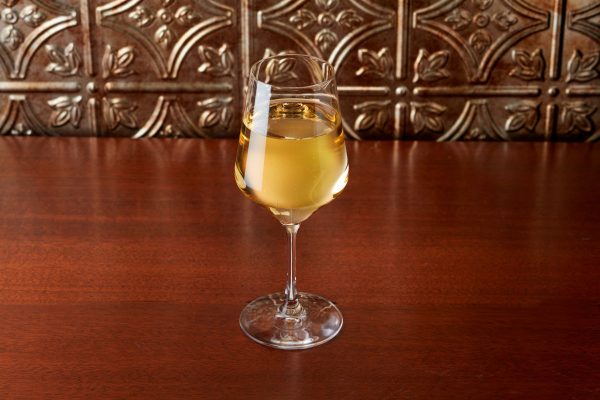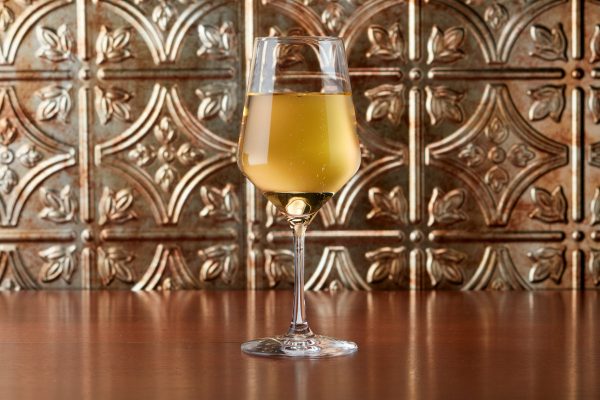
This recipe comes from 2005 AHA Mead Maker of the Year, Curt Stock. Curt discussed the process of making this mead in Northern Brewer’s Brewing TV Episode 21. So grab a drink and let’s raise a glass to this timeless classic, mead!
This recipe comes from 2005 AHA Mead Maker of the Year, Curt Stock. Curt discussed the process of making this mead in Northern Brewer’s Brewing TV Episode 21. So grab a drink and let’s raise a glass to this timeless classic, mead!
Ingredients:
- 21 lbs (9.5 kg) Wildflower Honey
- 12 lbs (5.4 kg) Triple Berry Mix (Blackberries/Raspberries/Blueberries)
- 6 lbs (2.7) Strawberries
- 96 oz (2.72 kg) Black Currant Juice (free of preservatives)
- 2.3 gal (8.7 L) Water
- 3 tsp (1.5 oz) Yeast Energizer/Nutrient Blend (Fermaid-K and DAP)
- 10 g (0.35 oz) Lalvin Narbonne Yeast (71B-1122
Specifications:
Yield: 5 gallons (19 L)
Original Gravity: 1.151
Final Gravity: 1.030 - 1.040
ABV: 15.8% (Estimated)
Directions:
Submerse the honey containers in hot water to loosen the honey, which will make it easier to dissolve. Partially or totally thaw the fruit. Sanitize all equipment used for making your mead. Mash the bagged fruit with your hands. If you prefer, put all the fruit into the pail and mash with a potato masher or similar tool. Use enough honey and water to get a total volume of 4.5 to 5 gallons (excluding fruit). Honey weighs approximately 12 pounds per gallon. Put all the fruit into your fermenting pail. You will want the temperature of the mead must to be 65 to 70 °F. If the fruit is still very cold you should heat the water enough to bring the temperature of the must into that range. Add the honey and water to the pail. Use a mixing spoon or wine degasser to mix the must and completely dissolve the honey. After the honey is dissolved, stir vigorously for a few minutes to aerate the must. The must does not need heat to pasteurize the honey or fruit. Prepare your yeast by re-hydrating, following the instructions on the packets. The use of a re-hydration nutrient such as Go-Ferm is highly recommended. This will prepare the yeast for the strenuous journey ahead of them. Pitch the yeast, add the first SNA and mix well. Fermentation should begin in about 12 to 24 hours. When signs of fermentation are noticed, start managing the fruit cap and begin the SNA schedule. With some luck, fermentation will be complete in two to four weeks. Once half of the sugar is depleted, continue to punch the cap at least twice a day but refrain from introducing oxygen into the must. Allow the mead to stay in primary for 4 weeks. At that point, transfer to the secondary carboy for clarifying. Taste the mead for sweetness level. If you desire more sweetness, now is the time to adjust it. To sweeten mead, start with a cup of the mead and add honey to a level sweeter than you want. Then blend the dryer mead with the sweetened sample to get three samples that vary by 10 gravity points ranging from too sweet to not sweet enough. Taste and blend the samples until you get the sweetness level you want. Get some help with this as your palate may get fatigued. Take a gravity reading of the sample you chose. Determine the specific gravity difference between the mead and the sample. Now you can figure out how much honey you will need to sweeten the entire batch to the desired level. One pound of honey will raise one gallon of mead approximately 34 gravity points. If you have 5 gallons of mead, each pound of honey will raise the batch about 6 to 7 points. Once you determine how much honey you need to add to the batch, use 1 cup of boiled water per pound of honey to dilute the honey. Pour the mixture into the carboy and mix until evenly dispersed. Take a sample and see if further adjustment is needed. Take caution to keep from over-sweetening the batch. It’s much harder to make it drier! After a month or two if the mead is not clear, transfer again and use a two-stage clarifier such as Super-Kleer. You can also use relatively inexpensive plastic filters with filter pads, pumping the mead from one keg, through the filer to a second keg. You will be amazed by the amount of fruit debris and insect parts on the filter pads, but your mead should be sparkling clear. One word of caution when filtering, pectin will clog a filter very quickly. You can use pectic enzyme to help remove the pectin. Two stage clarifiers do not remove pectin. Once you are completely sure there is no fermentation and the mead is clear, you can bottle. For sparkling mead, I suggest kegging and force carbonating. Bottle-conditioning sweet mead can be difficult, as well as creating exploding bottles.
Staggered Nutrient Addition (SNA)
- Add ¾ teaspoon yeast energizer/nutrient mix immediately after pitching yeast.
- Add ¾ teaspoon yeast energizer/nutrient mix 24 hours after fermentation begins.
- Add ¾ teaspoon yeast energizer/nutrient mix 48 hours after fermentation begins.
- Add ¾ teaspoon yeast energizer/nutrient mix after 30% of the sugar has been depleted.
SNA serves many purposes for yeast health. Abundant CO2 is toxic to yeast, so mixing while adding the nutrients will release the gas. Vigorous mixing introduces oxygen needed by growing yeast. The mixing also disturbs the fruit cap (or floating fruit). Punching down the cap should be done at least three times a day during the period of vigorous fermentation. Cap management is important for releasing toxic CO2 and preventing temperature buildup below the cap. For every 1 degree reduction of brix in the must, there is approximately a 2°F increase in temperature. Unmanaged, the temperature can increase to the point of killing your yeast in the heat zone below the cap, potentially driving off the floral fruity character of your fruit. This is less of a concern in the five gallon homebrew scenario but could still be a potential problem. If the cap is not pressed down into the must it can dry out. Then, if oxygen is introduced, spoilage organisms grow and produce off flavors.
Traditional Option
Making a melomel with nearly 20 pounds of fruit can get pricy! As a cheaper alternative, forgo the fruit and juice to create a traditional mead consisting purely of honey, water and yeast. Yeast nutrients and the SNA schedule should still be followed for optimum fermentation. Take into consideration that forgoing the fruit and juice will alter specifications listed above.





Share Post